#is shot
Text

i was supposed to post earlier but i'm a little scatterbrained mb
has anyone draewn this [(at least. them in roblox or anything)]
i reallly need a soul avatar but... soul (/sys) isn't really around soooo
i'll probs make one with or without tri being here
[(also. the reason why the mind avatar has angel wings is because i customized it to be more like me so he won't get angel wings... sor ry)]
#chonny jash#cccc#cj mind#cj heart#chonnys charming chaos compendium#hmsw roblox???#heart and mind roblox arc#surprisingly. heart /sys is better at evade than midas#he doesn't mind [(doesn't WHAT)] though honestly#newww auuu??#is shot#- 🌗
35 notes
·
View notes
Text
Ahit au where everything's the same except the tale of queen vanessa is doomed yuri and
#is shot#ive been thinking heavily on this for a day straight#help#ruby ramblings#ahit#ahit au#a hat in time#tale of queen vanessa
14 notes
·
View notes
Text
wowa
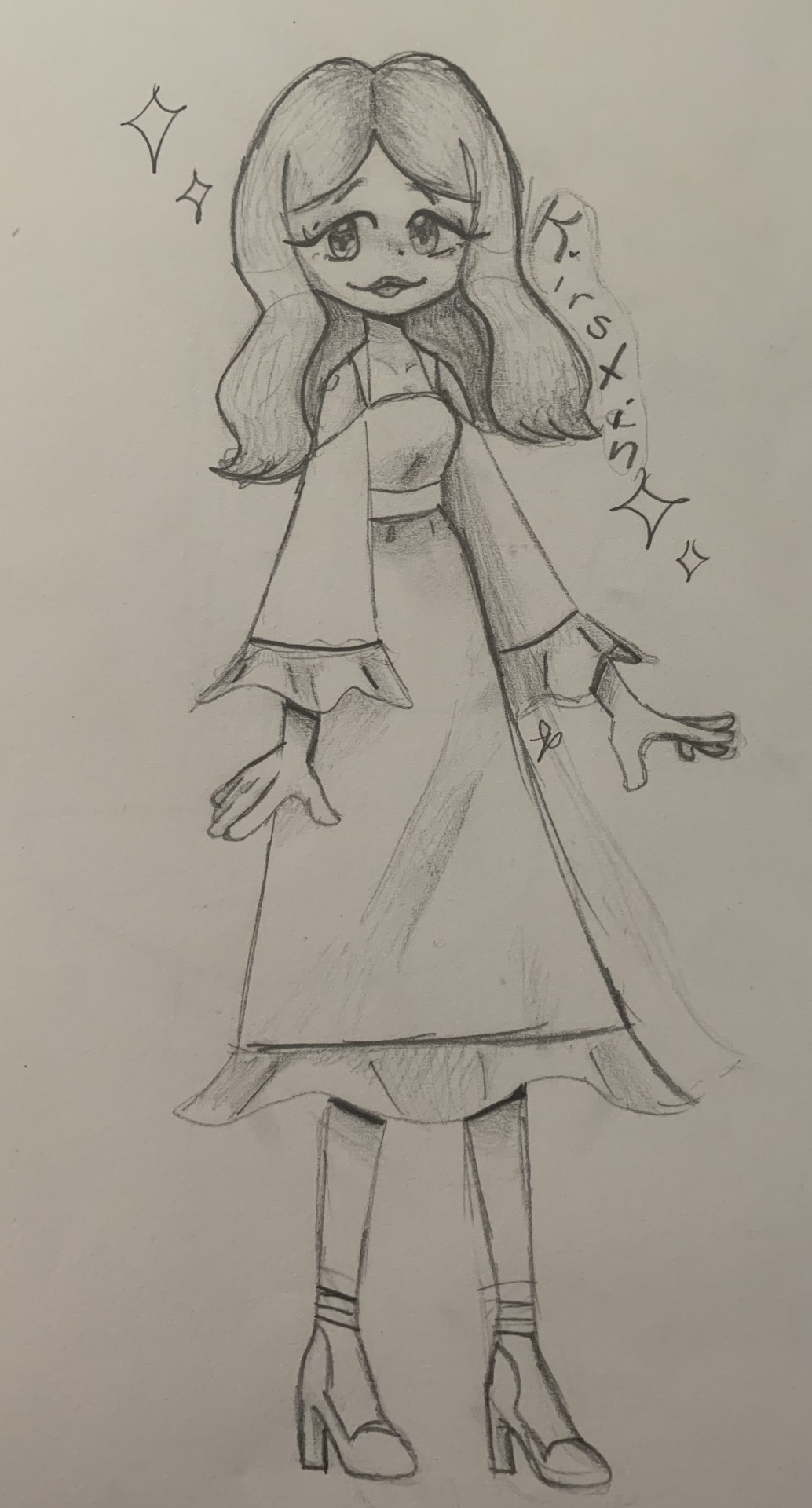
found an old sketch of Kirstin Maldonado that i made haha
#is shot#kirstin maldonado#fanart#kirstin maldonado fanart#ptx#idek what i was doing i was just#DRAW.#yk#dies#art
9 notes
·
View notes
Text
Why does ghostface sound so hot
7 notes
·
View notes
Text
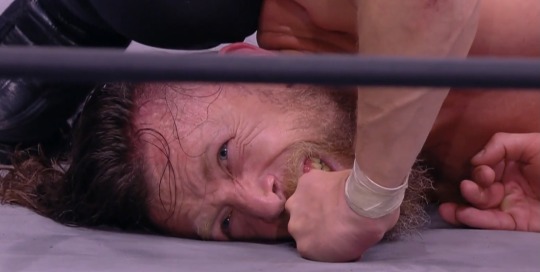
bryan when i. when he when i when when when
27 notes
·
View notes
Note
I've been reading your ofmd meta. It's amazing! How did you learn to figure all that stuff out?
Thank you for the ask!
There are two distinct questions here:
What makes OFMD a compelling ground for media and critical (meta) analysis?
What’s the critical basis I’m using in writing meta analysis and how did I learn to use it the way I do?
Why Write Meta Analysis of “Our Flag Means Death”?
The first question is easy: THERE IS SO MUCH TO UNPACK HERE. It’s all right out in the open, too, and it’s a real credit to David Jenkins that he created a supportive environment for the cast, the creative directors, the writers, and his entire CREW to bring all of their creative selves.
OFMD is so full of love for its characters and story that it always takes my breath away whenever I think about it. So much creative energy and love was wrapped into this show in so many ways that I’ll never shut up about it ever.
The second question has a longer answer.
Analytical Training, Experience, and Practice (Not Necessarily In That Order)
While I am formally trained and have a BA in English, I would still credit my experience as a writer-practitioner as equally or more important in my analytical background as the formal training.
I am first and foremost a writer, and I “read” texts like a writer who wants to figure out what makes a narrative function. Learning how something is working is fundamental to being able to replicate it in your own artwork.
The simplest term for what I use as a framework for all my meta is a technique historically called close reading, but I’d openly admit that I am more flexible and informal with it than you’d find taught in a typical college class!
Think of a “reading” in literature or film/media analysis as a bit like what a study or practice sketch does for visual artists.
When I was writing my meta post on The Tragedy of Israel Hands, I very explicitly decided to tackle OFMD and what was happening with Izzy by breaking down the show into episode-by-episode readings from Izzy’s point of view.
I also chose to add some extra spice based on direct scene transcriptions, mentions of Izzy by-name even when he wasn’t on-screen, and what was happening for him as a character (what was his story?) vs. the obvious romance that was happening for Edward and Stede in the foreground.
David Jenkins had helpfully stated in an interview that OFMD was broken up into acts, so I just followed his lead on doing the same in my analysis. ;) He’d also suggested doing a rewatch with a focus on Con O’Neill and I was intrigued by the possibility of what I might find.
Turned out? Con managed to fit an actual three-act tragedy into the same visual and narrative space (albeit in the background) as Rhys and Taika acting the main romance in the foreground! This is fucking incredible in my opinion. Con’s narrative counterpoint with Izzy adds so much depth and richness to the romance and the comedy. I could chew glass over it (and I did! hence the post).
I firmly believe that ANYONE can do a good and detailed textual reading (with or without formal training), so here’s my quick(?) breakdown of how that works for me in the hope that it will inspire you and others to try your hand!
The best way to get good at analysis is to practice. Analyze, analyze, analyze! Write, write, write! Create in whatever way makes sense to your brain and energizes you to explore how you think about what you love. You don’t even have to publish/share the results. It can just be for you if you want.
As usual, only do what works for you.
If there’s a thought or a step that you want to skip? Skip it. Do what you want. Create and write meta! Enrich the OFMD fandom with your own readings. :D
Ferus-Style Close Reading Guide
Goal: Break things down to build a detailed, text-supported understanding of a creative product (story, episode, play, film, painting, etc.). You can do this whenever you’re interested in something and feel like spending more time with it as a method of learning more and deeply appreciating a work of art.
Pick a moment in the text (show, fanfic, story, etc.) that interests you.
Interest is crucial! Think about why you’re interested. Sit with the text a bit.
Take extensive notes on what’s happening. You can also use another method you prefer like outlining, grabbing screencaps, or some combination to record and organize your first impressions and thoughts.
This serves as a record of where you started.
Don’t necessarily try to interpret right away, but DO decide for yourself what you think is happening in a moment or a particular scene. This can be as short as a single line of text or a few seconds of interaction in a TV episode or film. Trust yourself! The best art, by and large, does what it does in plain sight and will repeat or reinforce the significant themes and symbols.
Hold off on interpretation to allow yourself time to develop a good understanding of what has actually taken place in the text. Plenty of professional critics are weak at this step and jump straight into reshaping events to fit their thesis and interpretation rather than reading “out of” a text. It’s not necessarily bad (and there are techniques that use this sort of interpretation), but it’s really not where I’m coming from.
Break down your favorite scenes into as many moments (or points of focus) as are likely to be relevant to your analysis. If you’re working with a specific character, focus on their actions or their scenes (or other ‘by name’ references when they’re not on-screen). If the focus is a motif (a visual element), try to figure out what its appearance or framing is accomplishing when it is present. How do other characters react to it or introduce it? How do these interactions “read” to you? Again, what is happening?
This is the focusing step that typically tells me where the rest of my analysis is going. At this point I usually have an idea of what I’m seeing when it’s either reinforced by one or more sequential scenes (reinforced) or dropped and sidelined in an interesting way.
Take a step back and think about how the moment you’re analyzing is ‘working.’ What does it do? What purpose does this story beat or moment serve? Why is it happening in this moment, at this specific time, and what important features of character, setting, or story are happening? What are the consequences that follow?
I can’t stress consequences enough! Actions having consequences is a fundamental element of a well-structured narrative. The narrative consequences for a character or a plotline are one of the things that is MOST controlled by authorial choice. Do these consequences fit in with the theme you’ve noticed? Why or why not? Whatever is happening here is usually some of the most interesting elements of the narrative (if they’re present).
Write down your initial guesses about the answers the questions above. Or answer a few of your own questions in a first pass. Theorize!
Now that you’ve considered the individual moments, scenes, or elements and taken a stab at the larger emergent themes it’s time to mash them together into a coherent picture (what are YOU seeing?). How are you seeing this text?
Keep repeating the process above for other surrounding scenes (the context) or moments relevant to your analysis.
YMMV with repetition. A longer analysis takes more repetition. A shorter or more contained analysis may only go through this process once. Again -- no one person will see the same scene the same way as another! Everyone has a valuable perspective to contribute.
Theorize once again after stringing the analytical moments together and connecting them -- what new ideas occur to you once you’ve chewed over the “small” interesting bits separately? Does a pattern begin to emerge? Why or why not?
You can learn as much from figuring out your first impressions were wrong (and looking again to see what’s ACTUALLY happening) as you will from being “right” the first time. Enjoy the experience!
You can learn almost as much from absence as from presence. While that may sound cryptic at first, glaring absences when characters or significant elements are NOT present are just as important in their own way, and may help you discover other themes in the same text. Strategic absences are MUCH more difficult to identify without careful attention. They’ll be obvious when you begin to look for them (which is the fun bit).
“Establishing” shots (introductions, first/last shots, first/last words) are always important.
Repeated and reinforced themes are generally stronger indications that a particular symbol or motif is significant. Looking for repetition or apparently deliberate call-backs to previous episodes, comments, scenes, or character relationships are often where the most fruitful opportunities for analysis are located.
Write up your general conclusions based on what you’ve learned from your smaller (close) bite-size readings and why you believe they’re significant along with how they’re functioning. If you observe a theme or pattern, focus your writing on how that pattern is built up and the evidence you found to support that conclusion.
And you’re done! Or whatever process you prefer is finished. For now. ;)
-
The most important element in my analytical process is close attention to the different on-screen choices (in framing, acting, and dialogue) that I’m seeing in a particular episode.
I take extensive notes on what’s happening, sometimes by recording transcripts of the dialogue and often through watching and re-watching a scene of particular interest.
To continue with my example meta, The Tragedy of Israel Hands was based on rewatching OFMD with a focus on what was happening to Izzy in both the foreground and the background, with these questions in mind:
What would this story arc appear to be from Izzy’s perspective?
What extent was that interpretation supported by: each character’s arc, the framing of various shots, and the choices and tone throughout the context of Con O’Neill’s overall performance of this character?
Was there a narrative thread linking together Izzy Hands’s story as a contrast to Edward and Stede’s foreground romance?
And now you have the meta on the meta. METACEPTION. -is shot-
You probably didn’t want an answer this long, dear asker, but regrettably I Am Just Like This.
#our flag means death meta#ofmd meta#ferus ofmd meta#how ferus writes meta#answering asks#close reading#sorta close reading?#i do a very very detailed version of close reading that works for me#and it's considerably less formal than the historical or theoretical background#would suggest#metaception#the tragedy of israel hands#look the day has arrived when i write meta on meta#is shot#im laughing#ferus chats
61 notes
·
View notes
Text
listen i know im insane but
honkai: star rail? trigun vibes
#is shot#okay but like if you ignore the hoyoverse of it all its abt these people on an ecologically fucked planet#eaking out an existence with a very limited supply of power#and there was something that reminded me of a plant#the underground is even clearly inspired by westerns#all you need is revolvers#and some INSANE religious imagery obvi
2 notes
·
View notes
Text
cullen is a lannister and i wont shut up about it yeah theyre my favorite house cause im a leo and pride is sexy. cullen is like 16th in line to be heir to the rock and has sworn himself to the kings guard.
3 notes
·
View notes
Text
woke up this morning, rolled over, and very confidently tried to blow out my alarm clock like a candle. absolutely no precedent for that.
129K notes
·
View notes
Text
This website is too mobile focused these days. Reblog and tell me what your desktop/laptop background is.
#mine is a HD screenshot from The Hunchback of Notre Dame#it's a shot of the cathedral's towers it's gorgeous
71K notes
·
View notes
Text

never forgive trigger for what they cut
#m.txt#dungeon meshi#anime onlys its time to do your homework#im ASTONISSSHHHHEEEDDDD THIS SHOT WASNT THERE#WHAT WERE THEY THINKING??? THIS IS //THE// ICONIC SHOT
58K notes
·
View notes
Text
All this about not getting to see John Lennon on twitter but I think the real tragedy is that Freddie Mercury never had an instagram


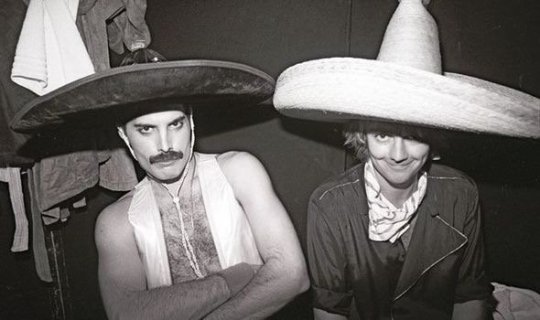
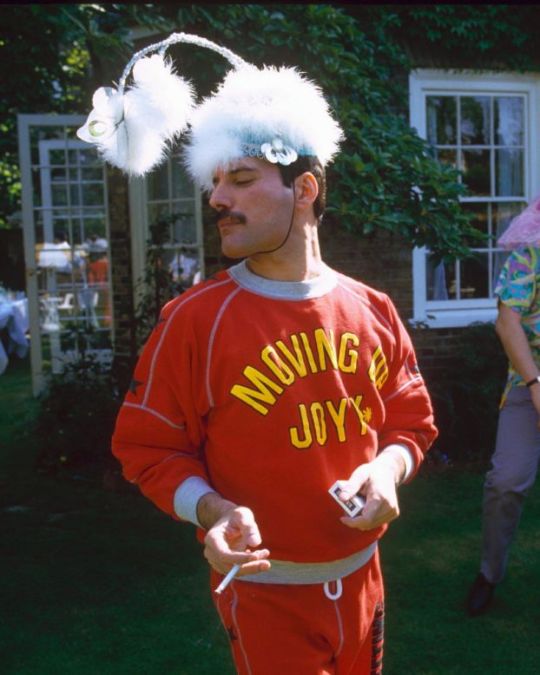
#freddie mercury#i bet he'd post a lot of cat pictures too#and like pretty nature shots and sunsets and things
27K notes
·
View notes
Text
"Why are there so many female archers in fiction?"
Please forgive the clickbait-y title! This is a super complex and interesting topic that I barely scratch the surface of here, but I hopefully will be able to do more justice to things like this in the future!
Also, it's not the point of the video, but I had fun with the outfits in this- do you have any faves?
As always, please consider supporting me on Patreon if you can, or watching on youtube if not!
68K notes
·
View notes
Text
Every time I see that G--gle phone photoshop commercial my heart is filled with infinite sadness, like, yeah it's cool you can have a good family photo, it's cool you can do that, but god, there is something to be said for the honesty of a family photo where you're blinking, or crying, or have ugly wrinkles.
What is too unsightly for you? Would you swipe-click-replace out the image of my cousin crying on our Florida trip family reunion photo? Would you remove the plastic snake I have clenched in my grip, which I still have to this day? Would you scoff at the wrinkles around our eyes and the strands of hair on our faces as we squint into the wind, the day before the massive storm? Would I remember it if I didn't have these reminders, if the picture was perfect and clean, all children in a row with perfect gleaming white tombstone tooth smiles? No tears. No plastic snake.
Everyone is beautiful and no one looks genuine.
#like it's cool it's cool but also IT HURTS.#BE UGLY#HAVE AN UNFLATTERING PICTURE OF YOURSELF#it's who you are#people are often unflattering and it's genuine#anyway stupid candid camera shots will always be my favorite pictures of myself#I like to see how I look when I'm not posing#the dragoon diaries
37K notes
·
View notes
Text

can't have shit in Baltimore
33K notes
·
View notes
Text
Funny things I found out playing with language setting in Netflix while looking episode 15:
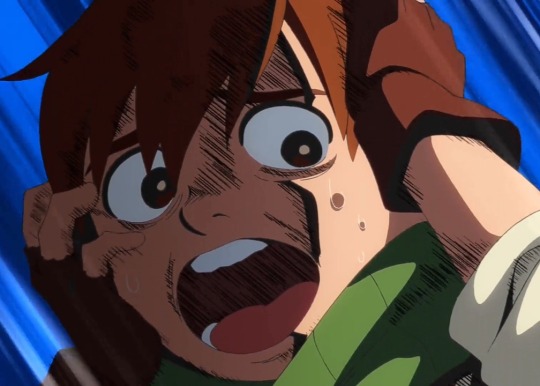
Chilchuck's scream sounds HAUNTED in brazilian portuguese. Give it a try if you can.
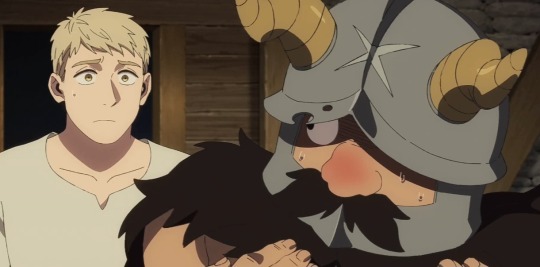
In spanish dub, Senshi says: "tocó mis senos de hombre", which means "he touched my man boobs" in Spanish. And I think that's the best dub line one so far.
#i love replaying certain scenes (usually screams) to see how they nailed it in other dubs#ive done it with Chilchuck & Mickbell screams because they're the funniest ones#give it a shot if you can#its really funny to hear certain character voices in other languages#for example. brazilian portuguesse gave both mickbell and chilchuck un-childlike voices (in japaneese both sound like little childs)#and they reused Chilchuck's japaneese screams for most of the other languages because he is so high-pitched and full of terror that it work#dungeon meshi#chilchuck#chilchuck tims#dunmeshi#delicious in dungeon#senshi#senshi of izganda#senshi dungeon meshi#idk how do you people screen record the episodes#if i knew how to i would put the shots here#my shit
21K notes
·
View notes